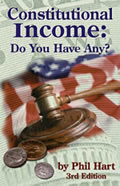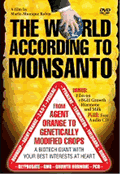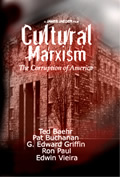A
CROSS OF GOLD
PART 2 of 5
By
Dr. Edwin Vieira, Jr., Ph.D., J.D.
May 10, 2011
NewsWithViews.com
As pointed out earlier, one such plan has already being floated among the international élitists through the United Nations Economic and Social Council. The United Nations World Economic Situations and Prospects 2010 has called for the Federal Reserve Note to be replaced as the reserve currency for international trade with a new currency to be issued by the International Monetary Fund, and initially based on the IMF’s so-called “special drawing rights”.[9] More recently, on 4 October of 2010 the Institute of International Finance, a consortium in which are associated some four hundred twenty (420) of the world’s most important banks and financial institutions, issued a policy letter which also advocated the emission by the IMF of a new currency based on “special drawing rights”.
Actually, this is not a new idea. In essence, it was John Maynard Keynes’ original proposal leading up to Bretton Woods—namely, that a true supra-national bank would emit its own global currency, to be called the “bancor”, which eventually would supplant all national and regional currencies, not only in international but also in domestic commerce (and, presumably, with respect to all political payments, such as taxes, too). So, one can expect that theoreticians of and other mouthpieces for paper currency and fractional-reserve central banking will now contend that the present failure of the Federal Reserve System as an ersatz “world central bank” arose precisely because world leaders did not follow Keynes’ recommendation.
In any event, whatever the music’s provenance, the globalist political oligarchs and the globalist economic oligarchs are now all playing the same discordant tune. And when one hears the overture, he knows that the opera cannot be far behind.
The supra-national character of this proposed new global currency, and of the institution that will emit it, is of crucial importance, because contemporary Americans still retain the power to deal with the Federal Reserve System directly, through Section 30 of the Federal Reserve Act of 1913, which provides that “[t]he right to amend, alter, or repeal this Act is hereby expressly reserved.”[10] But they will lose this power when a supra-national monetary scheme is imposed on them. And whatever other, similar power (if any) they might retain for themselves will depend upon the terms of the treaty or other international agreement by which the new currency gains legal-tender status in the United States.
To be sure, a treaty cannot override the Constitution of the United States. And a treaty can always be set aside, in part or in whole, by a subsequent statute of Congress. Nonetheless, because the American people never demanded that it be enforced, the Constitution has not stopped, or even retarded the profligacy of, the Federal Reserve System since 1913. Neither have the Members of Congress whom the people have elected generation after generation ever invoked Section 30 of the Federal Reserve Act, or any other provision of any other statute, to correct the banking cartel’s excesses, except to make them worse (such as by removing redemption in gold, outlawing the private ownership of gold from 1933 until 1973, and outlawing gold-clause contracts from 1933 until 1978). So one can safely presume that any new supra-national global currency and central bank will be even harder for Americans to influence, let alone control, than the Federal Reserve System has proven to be.
The true perversity of the present situation lies in the indication—indeed, in some quarters the expectation—that this scheme for a new supra-national monetary order will be sold to a doubting world by attaching some sort of “gold standard” to it. This could be used as the bait to entice naive people tired of monetary instability caused by international bankers to bite on the hook of supra-national management of their economies by the selfsame international bankers.
Beyond any doubt, however, whatever will be offered will not be even a traditional “gold standard”, perforce of which the issuer of a unit of paper currency (or bank credit solvable in that currency) will be required by law to exchange each unit of its currency for a fixed weight of gold upon demand by the holder of that currency. Neither will it be a true “gold standard”, in which the only actual unit of money is a fixed weight of gold, and everything else is merely an instrument of debt without final “legal tender” force as currency. So, even with whatever thin gold veneer may be provided (if that is the ruse to be used), the new supra-national global currency will be a deception from its inception.
In light of the precedents, though, notwithstanding its inherent instability the new swindle may be able to perdure for perhaps another forty (40) years, during which time tremendous further looting, waste of resources, and other damage will be visited upon the peoples of the world.
Yet, one may doubt that any such supra-national monetary and banking structure will soon be created under present conditions.
First, the European monetary union—which, in large measure, is the regional precedent for such a global arrangement—is now under increasing strain, and threatens to collapse, with its constituent countries perhaps returning to their national currencies.
Second, no reason exists to believe that Russia and China, in particular, will agree to submit their economies to some supra-national monetary and banking authority—and quite a few reasons to suspect that Germany might desire to become part of an new political and economic bloc consisting of Germany, Russia, and China, an expanded economic and political Dreikaiserbund the wisdom of which Bismarck would certainly have appreciated.
In any event, in the face of these possibilities, what are Americans in particular to do to protect their interests?
Basically, they have two choices:
* Americans can try to salvage, “repair”, “restore”, and then control the present Federal Reserve System. Or,
* They can provide themselves with an entirely new currency, preferably before the present one completely self-destructs.
[2] Salvaging the Federal Reserve System by returning Federal Reserve Notes to redeemability in gold.
More than half a century ago, Professor Walter E. Spahr rather starkly summed up the situation:
It should not be surprising that apparently all who would socialize our economy are opposed to the restoration of a redeemable currency in the United States. Either because they understand the relationship between an irredeemable currency and the process of socialization or because they simply note that Socialist, Communist, and Fascist governments employ irredeemable currencies as a means of controlling and managing the people, advocates of government dictatorship seem invariably to defend irredeemable currencies with the utmost vigor. The evidence seems overwhelming that a defender of irredeemable currency is, wittingly or unwittingly, an advocate of socialism or of government dictatorship in some form.
So long as a government has the power over a people that is provided by an irredeemable currency, all efforts to stop a government disposed to lead a people into socialism tend to be, and probably will be futile. The people of the United States have observed all sorts of efforts, organized and individual, to bring pressure upon Congress to end its spending orgy and processes of socialization. It should be amply clear by this time that none of these efforts has succeeded. Moreover, there is no reason for supposing that any of them, except the restoration of redeemability, can succeed in arresting our march into socialism.
With all due respect to the memory of Professor Spahr, however, the fundamental problem is not irredeemable currency. It is, and always has been, redeemable currency—at base, the delusion that the thing being redeemed (a paper note) is the actual “money”, not the thing in which redemption is made (a piece of actual gold).
Revealingly, not even the original Federal Reserve Act made that error. Section 16 of the Act provided that
Federal reserve notes, to be issued at the discretion of the Federal Reserve Board for the purpose of making advances to Federal reserve banks * * * are hereby authorized. The said notes shall be obligations of the United States, and shall be receivable by all national and member banks and Federal reserve banks and for all taxes, customs, and other public dues. They shall be redeemed in gold on demand at the Treasury Department of the United States, * * * or in gold or lawful money at any Federal reserve bank.[11]
Observe: From the very first, Federal Reserve Notes were denominated “advances” and “obligations”—that is, instruments and evidence of debt. True “money”, however, is the most liquid of all assets, not a debt that might be repudiated, and certainly not a debt that has been serially repudiated.
And if Federal Reserve Notes were from the start to be “redeemed * * * in gold or lawful money”, they obviously were never conceived to be either “gold” or “lawful money”. So, because by definition the only “money” the law recognizes is “lawful money”, by law Federal Reserve Notes were never (and are not now) actual “money” at all, but at best only some sort of substitute for “money”.
The monetary conjurers’ trick has been, slowly, steadily, and stealthily, to reverse this understanding in the public’s mind. That is, to make the substitute pass for the real thing, and then remove the real thing from the operation.
This subterfuge was not overly difficult to put over. After all, in the term “redeemable currency”, which is the noun and which the adjective? When people deal with a “paper currency redeemable in gold”, the natural uninstructed inclination is to treat the paper currency as “money” and the gold as something else. The paper currency, as the saying goes, is merely “backed” by gold—but of course is not itself gold. And because the currency is not itself gold, the money- manipulators can remove the gold “backing” farther and farther into the background, without affecting the nature of the paper as “currency” (at least nominally).
Thus, a “redeemable currency” can be converted into a “contingently redeemable” or “conditionally redeemable” currency, through temporary suspension of specie payments (as happened repeatedly during the Nineteenth Century); and then into a full-fledged “irredeemable currency”, through permanent suspension of specie payments, as with Federal Reserve Notes after 1933 domestically and 1971 internationally.[12]
Yet, to the average citizen (whose most serious liability is mental inertia), even though a paper currency’s promise of redemption has been dishonored, it nonetheless remains “currency”.
Thus one grasps that the so-called “right to redemption” attached to any paper currency is actually a liability, inasmuch as it exposes the holders of that currency to repudiation, because they possess only the paper, not the gold.
Even in the best of times, the holders of redeemable paper currency are not economically and politically independent. Rather, they depend upon the honesty and the competence of the money-managers.
This is why America’s Founding Fathers, realists all, denominated redeemable paper currency as “bills of credit”. They knew that such bills’ values in gold or silver always depended upon the issuers’ credit—that is, ultimately, the issuers’ honesty and ability to manage their financial affairs.
The unavoidable trouble with “bills of credit”, though, is that they can (and usually do) turn out to be “bills of discredit”, when the holders discover that the money-managers are dishonest and incompetent—or worse, as is the situation today, highly competent at dishonesty. Then the holders of the paper currency (if they are sufficiently astute) realize how unwise it is to allow the gold to be held by the very people with the greatest incentive, and the uniquely favorable position and opportunity, to steal it.
But when the money-managers refuse to redeem their currency, what can the holders of that currency do to protect themselves? Well, what were they able to do in 1933 and in 1971? Nothing. If the holders of Federal Reserve Notes had enjoyed an effective, enforceable “right” to the gold that the Federal Reserve System and the Treasury of the United States promised to pay in redemption of those notes—that is, if the currency had been “redeemable” in the only meaningful sense that redemption was absolutely assured as a matter of law and especially fact—the gold seizures of 1933 and 1971 would never have happened.
| Subscribe to the NewsWithViews Daily News Alerts! |
Thus, the ostensibly “redeemable” character of paper currency of the pre-1933 and pre-1971 type did not protect the holders of that currency. Instead, it turned out to be the very device used to deceive, defraud, divest, and dispossess them of gold—proving in the most palpable manner that a society’s acceptance of “redeemable currency” is the product of confusion and the invitation to inevitable economic and political disaster.
In The Theory of Money and Credit, Ludwig von Mises outlined a proposal for returning to a Federal Reserve Note redeemable in gold. No doubt, coming from that source, it is a workable approach. But, even assuming arguendo that it could be done, why should it be done? For part three click below.
Click here for part -----> 1, 2, 3, 4, 5,
Footnotes:
9.
“Special Drawing Rights” are an ersatz international
reserve currency, the value of which are derived from a “basket”
of major currencies, and that are allocated to members of the IMF in
proportion to the amounts of gold or (primarily) major foreign currencies
that those members deposit with the IMF.
10.
38 Stat. at 275.
11.
¶ 1, 38 Stat. at 265.
12.
See 31 U.S.C. § 5118(b and c).




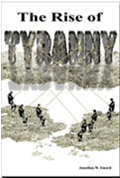
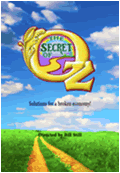







 Share
This Article
Share
This Article
